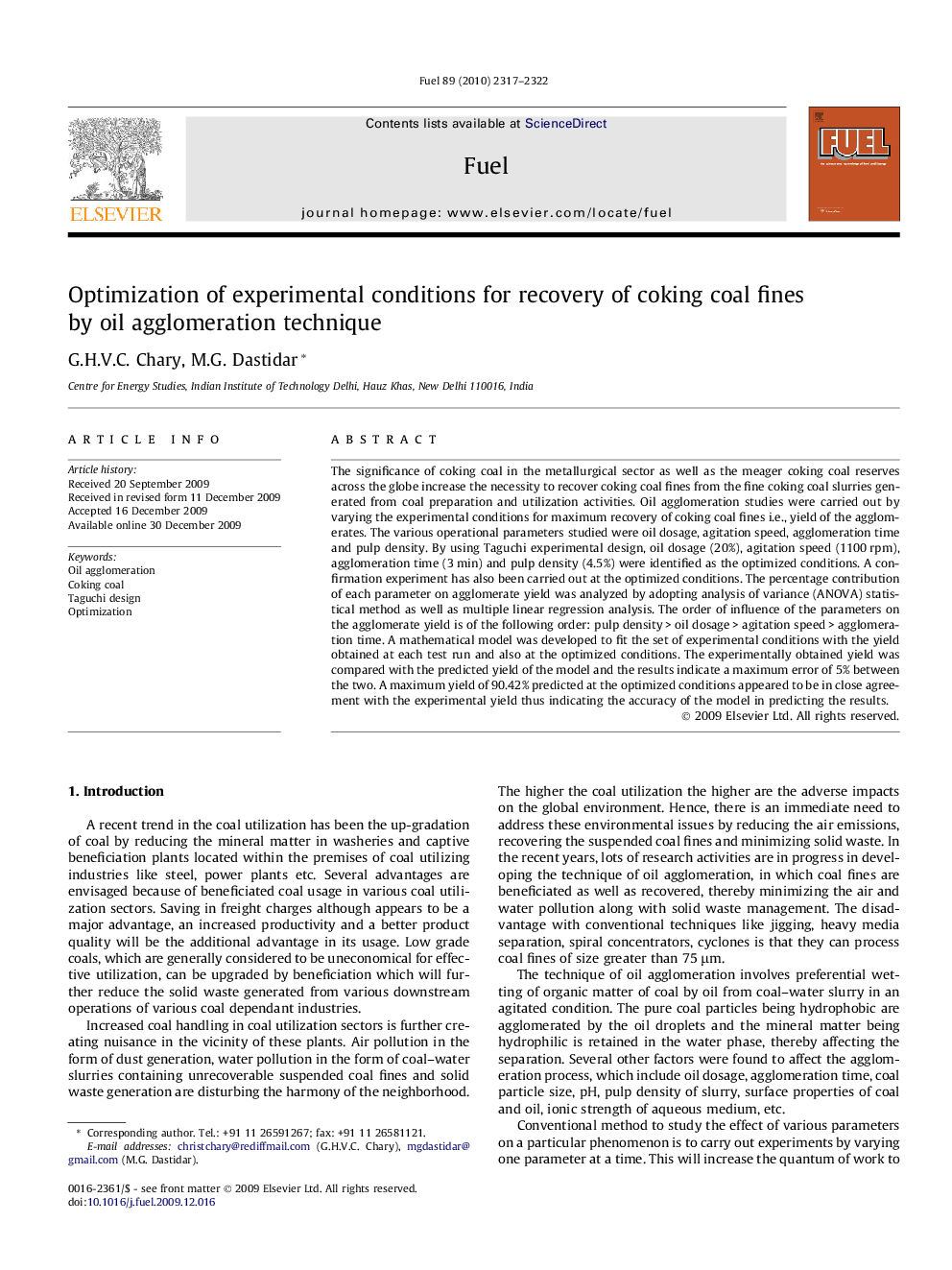| Article ID | Journal | Published Year | Pages | File Type |
|---|---|---|---|---|
| 207060 | Fuel | 2010 | 6 Pages |
The significance of coking coal in the metallurgical sector as well as the meager coking coal reserves across the globe increase the necessity to recover coking coal fines from the fine coking coal slurries generated from coal preparation and utilization activities. Oil agglomeration studies were carried out by varying the experimental conditions for maximum recovery of coking coal fines i.e., yield of the agglomerates. The various operational parameters studied were oil dosage, agitation speed, agglomeration time and pulp density. By using Taguchi experimental design, oil dosage (20%), agitation speed (1100 rpm), agglomeration time (3 min) and pulp density (4.5%) were identified as the optimized conditions. A confirmation experiment has also been carried out at the optimized conditions. The percentage contribution of each parameter on agglomerate yield was analyzed by adopting analysis of variance (ANOVA) statistical method as well as multiple linear regression analysis. The order of influence of the parameters on the agglomerate yield is of the following order: pulp density > oil dosage > agitation speed > agglomeration time. A mathematical model was developed to fit the set of experimental conditions with the yield obtained at each test run and also at the optimized conditions. The experimentally obtained yield was compared with the predicted yield of the model and the results indicate a maximum error of 5% between the two. A maximum yield of 90.42% predicted at the optimized conditions appeared to be in close agreement with the experimental yield thus indicating the accuracy of the model in predicting the results.
